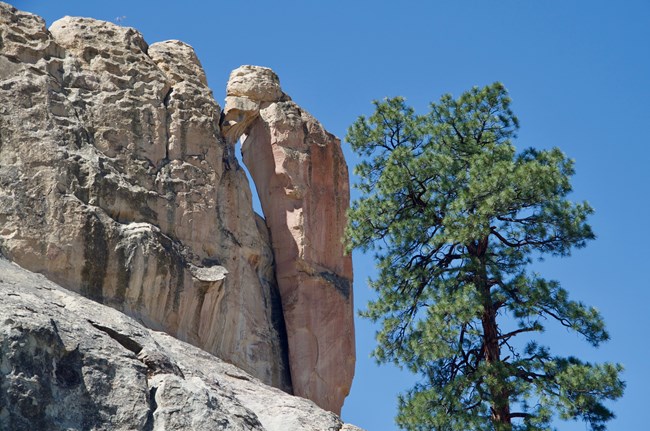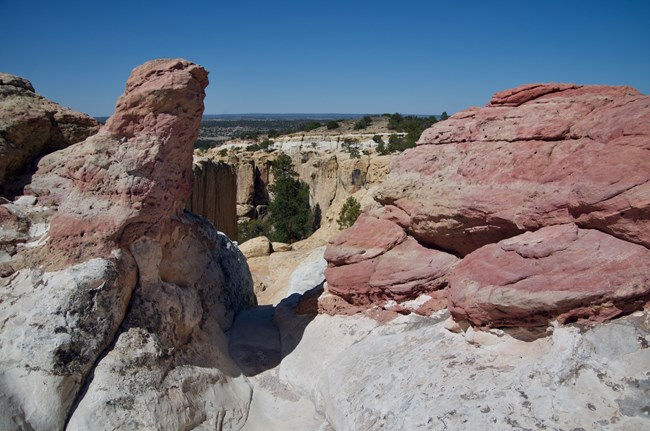
NPS Photo/Julianna Ellis
El Morro is part of a cuesta that extends well outside the boundaries of the national monument. A cuesta is a ridge with a gentle slope on one side and a steep slope or drop on the other. Spanish for "slope", a cuesta is usually tilted between 40-45 degrees, but can be much more subtle. This tilt differentiates a cuesta from a mesa, which is an isolated flat rocky outcrop. In the case of El Morro, the cuesta slopes to the south, forming a prominent cliff to the north and is home to the pool and the inscriptions and petroglyphs that prompted the protection of the area in 1906.

NPS Photo/Julianna Ellis Zuni SandstoneThe rock outcropping of El Morro is composed of yellowish-gray Zuni sandstone from the Jurassic Period (200-145 million years ago). The quartz grains that make up this sandstone are the same size and are characteristic of wind-blown dunes that form in arid lands. El Morro was part of a Sahara-like sand dune field that stretched across northwestern New Mexico, northeastern Arizona, southwestern Colorado, and southeastern Utah approximately 150 million years ago. This rock formation was never buried deep enough for the sand grains to be tightly squeezed together. As a result, it is a perfect medium for the finely detailed inscriptions we see carved on the rock face today. The dark, vertical streaks found in numerous places are from rainwater that has trickled down from the top of the bluff and left behind a patina of minerals such as iron and manganese. 
NPS Photo/Julianna Ellis Dakota SandstoneThe darker layer of Dakota sandstone that caps the pale Zuni sandstone on top of the bluff is from the Late Cretaceous time period (145-65 million years ago). Dakota sandstone is made up of a number of components, including beach and lagoonal sandstones, shale, and conglomeratic (large-grained) sandstone layers deposited in the area as a shallow sea advanced through New Mexico. Dakota sandstone is tan to yellowish brown and is interbedded with dark gray. |
Last updated: May 6, 2025
